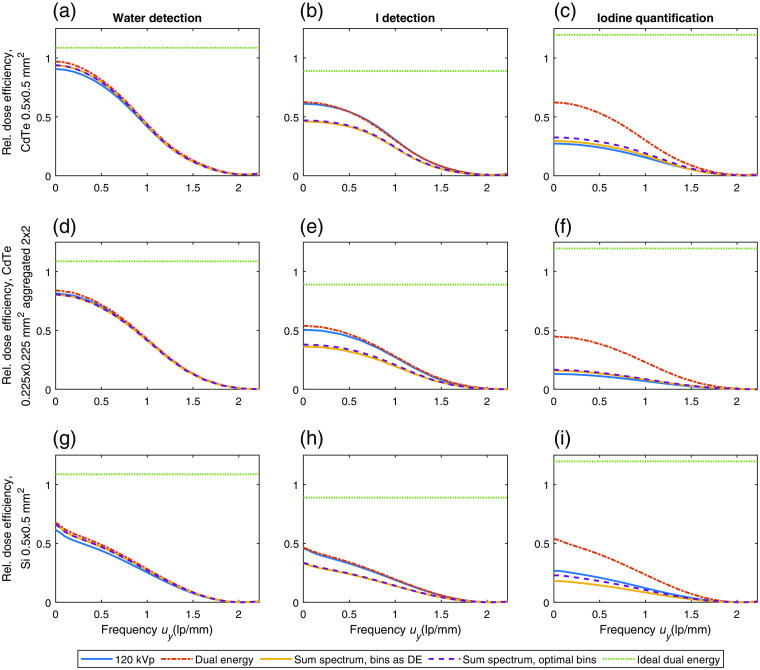Fig. 11.
Relative dose efficiency for water and iodine detection and two-basis iodine quantification, for dual-energy imaging (80/Sn140 kVp) relative to single-energy (120 kVp) imaging, both with an ideal energy-resolving detector. Also plotted is the 120-kVp single-energy DQE of the studied detectors. The plots show the performance of the CdTe systems with 0.5 mm (a–c) and -aggregated 0.225 mm (d–f) pixels, and for the 60 mm active Si sensor with tungsten foils (g–i). The performance is shown for detection of water (a, d, g) and iodine (b, e, h) and for quantification of iodine in a two-basis decomposition (c, f, i). “Sum spectrum”: performance when both detectors measure the sum of the 80- and Sn140-kVp spectra. DE bins: same bin configuration as used for dual energy. Optimal bins: bins optimized for the sum spectrum case. “Ideal dual energy”: relative dose efficiency of 80/140-kVp dual-spectrum imaging with two ideal energy-resolving detectors. 300-mm water attenuation was assumed for all spectra. External antiscatter grid and object scatter were not included.

